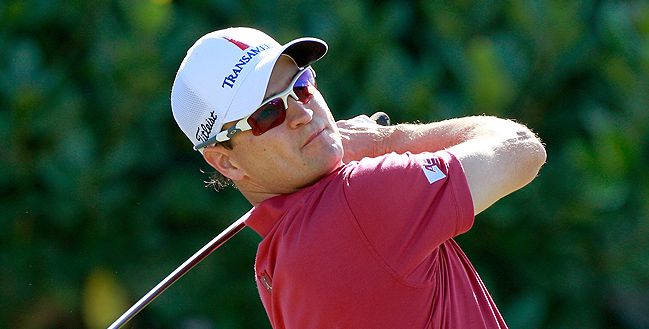
I would like to dedicate 2012 to one word - scoring. I am a firm believer that if we went out and played a round of golf in similar fashion to what we already do, yet scored five strokes lower, we would enjoy ourselves a lot more and feel much better about our golf games....no?
At this point you're asking, "How I can play in a "similar fashion" and somehow magically score better?" Certainly upgrades are required, but we're talking something fairly simple. I believe a change in approach and practice habits in three areas, driving, wedging and putting has the greatest chance to lower almost any golfer's score quite substantially.
During the course of a round you hit somewhere in the vicinity of 60 shots just with these three or four clubs. Wouldn't you like to keep the ball in play off the tee on two more holes than you normally do? Or find a way to gain 10-15 yards? How about getting two more up and downs per round? Or even just making a higher percentage of putts from inside five feet? While none of the above upgrades are "game changers" on their own, when a golfer improves with the clubs they use for sixty shots per round, good things are bound to happen.
Here are a few really simple pieces of information pertaining to each of the three scoring components that far too few golfers incorporate into their games:
- I have been able to help so many golfers increase the distance and accuracy of their tee shots simply by showing them how to hit up on the ball. Make it one of your goals this year - get on a launch monitor regularly and learn how to hit up with the big stick. Do you know that golfers who take a lesson TrackMan gain an average of 12-15yards? That effectively makes every golf course they play 200 yards shorter!
- When it comes to pitching are you trying to do more than you should? Course management is huge in pitching and way too many golfers are going for shots that are beyond their handicap level. Learn when to "hold 'em" and you'll save at least two strokes per round.
- You cannot buy a wedge without bounce on the sole of the club. Know why? The manufacturers want us to be successful with their equipment and bounce is an important aid to help us all wedge better. Use a set up that maintains some bounce on the sole of the club...it's not hard once you know how.
- The single greatest putting key is to keep your eyes focused on the spot the ball occupied before it was struck. Sounds easy...no? Is it something you incorporate into your game?
What I'm saying is that I believe I can take multiple strokes off your game simply by teaching you to: hit up on the driver; understand bounce and how to use it; know when to go for certain pitch shots and when to just hit the green; and teaching you to keep your eyes quiet when you putt. How hard is that? If you dedicate your work and practice to the above items I guarantee that you will see progress.
Zach Johnson is a perfect example of what I'm referring to. He's an average size guy who grew up in the golfing mecca of Iowa, yet he's managed to turn himself into one of the top 20 golfers in the world. He's an efficient, yet short driver of the ball, a great wedge player and a very handy putter - a proven recipe for success.
In the upcoming months you will notice a change at andrewricegolf.com. The majority of all articles and instructional posts will be directed toward driving, wedging and putting. So whether you need to keep it in play or get longer off the tee, get it on the green or up and down, two putt from 40 feet or stop missing 3 footers - you will learn drills, games, challenges and techniques to get the job done more effectively.
I have been blessed to take numerous overseas trips to play golf and they are always the highlight of my year. My favorite country to play golf in is
Ireland as the links courses and locals are simply second to none. If you are planning an international golf trip to either
Ireland or
South Africa feel free to drop me a line if you need any suggestions. Should you be in the early stages of planning your trip be sure to check out
golf holidays abroad - they can certainly offer some excellent advice.Please do us both a favor and do away with tips and swing fads and band aids - make 2012 the year where you establish a long term plan and commit to really getting better. It can be done...stay tuned.












